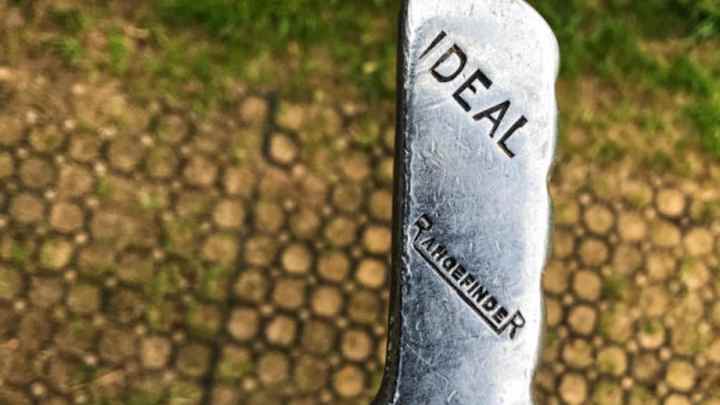Golf in Scotland restores game’s fun factor

LUNDIN LINKS, Scotland – It’s easy to forget how much fun golf can be.
If you play in the United States, the game can be a struggle, often at a slow pace on expensive, unimaginative courses.
For Americans, golf too often equates to five hours of mind-numbing drivel. Many times, the group in front can seem to consist of novices. The etiquette of letting a player or group go through can seem to be a foreign concept.
That is the state of the game at many courses in the U.S. Of course, there are exceptions.
PHOTOS BY ALEX MICELI
The Ideal Rangefinder putter used by Alex Miceli’s partner, Graham, came through again and again in Scotland.
In Scotland, the exception tends to be the norm. Visitors to the “home of golf” experience the local customs in only one round.
Golf in Scotland isn’t all that far removed from the mid-19th century, when the legendary Old Tom Morris hit shots down the fairways at St. Andrews’ Old Course, Crail or North Berwick. The game and its people here haven’t really changed in the past 200 years, as I learned again over the weekend.
I played with three members of Lundin Golf Club, about 13 miles southwest of St. Andrews, on the Firth of Forth.
The course was founded with nine holes in 1868 but underwent course changes and economic struggles since the early days. In 1889, the club started from scratch. Four years later, club membership rose to 130. By 1907, the membership numbered nearly 400. In 1908, the course was renovated and expanded to 18 holes after James Braid, a Scotsman who would go on to win five British Opens, visited Lundin.
The Braid layout rolls up and down, sprinkled with sand bunkers and gorse bushes. The course was one of the most perfect and enjoyable routings I’ve ever played. Each hole was different, imaginative and most importantly, fun to play.
That’s the course, but let’s get back to what made the day so much fun.
Golf is a social event, a game best played with one, two or three others, usually friends, but sometimes total strangers.
On Sunday, I played with a golf journalist, a former doctor and a retired healthcare executive who also was the captain of the club.
I’d never met any of them, but the golf journalist, Malcolm, was introduced to me by a friend via text.
The weather was cold, windy and overcast, but the 18 holes were some of the best fun I’ve ever had in golf.
The discussion with these gentlemen whom I had just met was similar to a conversation among longtime friends.
My partner, Graham, the doctor, played with a putter that was more than 50 years old and likely would be passed over by most 6-year-olds at the local Salvation Army.
Since he was 14, Graham, now 64, never has given up on the putter. He made more putts than Patrick Reed holed in the final round of the Masters.
We won the team match, and Malcolm and Ben the captain laughed and smiled as putts dropped from all over the links.
That’s golf in Scotland. That’s how the game is supposed to be: fun, entertaining and an experience that makes coming back to play at Lundin and Scotland something worth anticipating.
When I return in July for the British Open, I already have a game at Lundin lined up. It’s months away, but I can’t wait to get back to Scotland.
Alex Miceli is the founder and publisher of Morning Read. Email: alex@morningread.com; Twitter: @AlexMiceli

Alex Miceli, a journalist and radio/TV personality who has been involved in golf for 26 years, was the founder of Morning Read and eventually sold it to Buffalo Groupe. He continues to contribute writing, podcasts and videos to SI.com. In 1993, Miceli founded Golf.com, which he sold in 1999 to Quokka Sports. One year later, he founded Golf Press Association, an independent golf news service that provides golf content to news agencies, newspapers, magazines and websites. He served as the GPA’s publisher and chief executive officer. Since launching GPA, Miceli has written for numerous newspapers, magazines and websites. He started GolfWire in 2000, selling it nine years later to Turnstile Publishing Co.